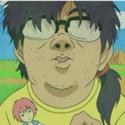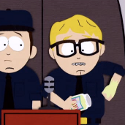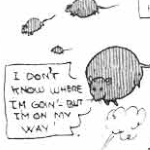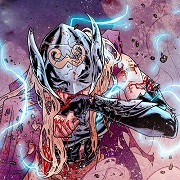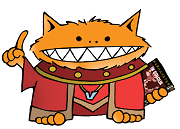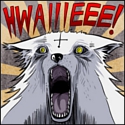|
 Hold on to your asses, rear end-holders! Hold on to your asses, rear end-holders!  It's 1998, and you're just getting off the school bus. Life in the 7th grade is rough, but every day holds the promise of coming home to screaming and energy blasts on TV. You and your friends bathe in the shoddy animation and almost non-existent plot progression every day, wishing you could be like your heroes Goku and the bald guy who dies all the time. After a trip to the game store, your pal Jimmy has brought you the answer to your wishes!  Jimmy knows not what suffering he brings! Hi, I'll be ruining your day by filling your brain with the knowledge that this game exists! None of you deserve this and I'm sorry. I'll get this out of the way right now: this game doesn't work. The rules fall apart from the word "go." Since this isn't a game with an original setting, and since nearly everything laughable about this game exists in the mechanics, this first post will be glossing over a lot of the setting stuff because it's DBZ and everyone just wants to know how to do backflips and throw fireballs (spoilers: very poorly!). I can certainly go back later to cover what I zoom past, so if anyone wants to know more about something, just let me know. As much as I'm going to make fun of this, I still like the show. This is mostly because I'm easily entertained by bright colors and motion, much like a small child. That's why I have to share this game with you all, because I feel like people need to know how something could possibly not live up to the lofty standards of the Citizen Kane of Anime. Some History Much to the surprise of anyone who doesn't seek out disappointment, R. Talsorian made a tabletop RPG out of Dragon Ball Z in 1999. Written by Mike Pondsmith of Cyberpunk fame, the game was an attempt to cram an already-shoddy cartoon into a simplified version of their Fuzion system. Fuzion was a mix of Cyberpunk's Interlock ruleset and some edition of HERO, and R.Tal used it for a few different games. It wasn't the first anime-based RPG the company had released, but I can hardly imagine that it wasn't their worst. The Fuzion system was Talsorian's attempt at a universal system, and had two levels complexity depending on how much crunch a game called for: Total Fuzion was the default ruleset and was fairly crunchy but too overwhelming, while Instant Fuzion was meant to be very simple and lighter on rules and chargen options. DBZ used Instant Fuzion, since you probably don't need a lot of stats for such a one-note game. The Books The DBZ RPG had three books (the core book and two supplements) that each covered one of the show's major story arcs (sort of). The core rulebook covers the first arc, the Saiyan Saga. The first supplement carries through the Frieza Saga, and the second one covers Garlic Jr. and the Android Saga. It's sort of the weird book since Garlic Jr. was pretty much just filler in a show that already goes nowhere, and the "Android Saga" is really just the first half of a major arc, and furthermore Dragon Ball Z, Abridged The book opens with a bunch of background about the show, since they are at least trying to pretend that someone who buys the game might not have actually seen the show. The first ten or so pages is a synopsis of the Saiyan Saga, followed by stats and summaries of the show's main characters that appear during the episodes the book covers. The character write-ups aren't bad, and there's some sidebars that explain puns or references in character names or mannerisms. It's interesting if you're a fan of the show, and if you're not a fan of the show then you probably don't have this little bundle of regret in the first place. After the character write-ups is about 30 pages of information about the rich, detailed setting of the Dragon Ball universe. Like the previous chapter, it's really more of a reference to the game's intended audience. There's a couple spots where it goes into detail for the heck of it, but everything important is made pretty clear in the TV show. I'll go over the basics:
Good gravy, just tell me how to roll dice! After all the setting stuff, the game finally gets around to telling you how the rules work. This is the worst decision the book ever makes, and it never gets better from here. Strap in! As I mentioned before, the DBZ RPG uses the Instant Fuzion rules. Rolls are resolved by Stat + Skill + 3d6. This seems reasonable at first but we're going to find out why this just won't do. Anyway, characters get four Basic Characteristics and three-ish Derived Characteristics. Your basic stats are:
Your derived stats are:
Power Level being randomly determined is pretty weird since it's the only part of chargen that is random. You'll also notice that it's possible to have a Power Up higher than your Power Level. That just means you'll gather all your available energy at once. Good luck with that! Next, you have six skills. Each skill is linked to a basic stat, though some rolls might allow you to use a different stat than you normally would. The skills are:
The rest of the chapter is about combat, but since that's where the bulk of the game's problems start I'm going to hold off until the next post to give it the attention it deserves. Instead, let's jump ahead a little bit and look at how to make a character. I want to be a Super Saiyan 5 and I'm stronger than ten Gokus put together! Chargen starts with a very important question that every player is going to ask: can I be a Saiyan?!? The answer is probably not! In order to make a Saiyan character, you must roll a 2 on 2d6. Rolling a 2 or 3 on 2d6 lets you make a Namekkian, since weird slug dudes are the next best thing to fearsome monkey warriors. Otherwise, you're a standard human. Like I mentioned way back in the setting portion of this post, "human" also includes all the animal people so you can be a wolf-headed guy or whatever. Mechanically, though, you still don't get any special treatment if you didn't Roll To Be Better. After that is a bunch of stuff about having a basic personality and background. It's DBZ, you really don't need a detailed background. Now you finally get to throw some numbers around! The first thing is your basic stats. As above, you have four of them. You get 40 points to distribute however you want. In Fuzion, a stat of 3-4 is average, 7-8 is going to put you in the top 1% of human ability, and going above 10 is clearly superhuman. That being said, basic stats are very rarely used alone, so having a high skill can make up for a low basic stat. That's a good thing, because the Dragon Ball Z RPG never lets you increase your basic stats! Whatever you assign now, that's what you've got forever. Spending XP allows you to raise skills and derived stats, but not basic stats for whatever reason. This is even dumber when you realize that the updated stats in each book for the show's characters increase their basic stats with everything else. After assigning your basic stats and determining your derived stats from them, you get 50 points for your skills. You don't have to put points in every skill, and rolling a skill you don't have just uses your basic stat like any other roll. Finally, you can make up special techniques. Special techniques are hand-to-hand attacks with a goofy name you get to make up, a sweet description of how you want to maul your opponent, and a skill cost. The skill cost can be whatever you want, but when you use your special technique you take a penalty to COM+Fighting+3d6 equal to the cost. The tradeoff is that for every point you reduce your skill, your attack will do one extra die of damage. Basic melee damage is a number of d6s equal to your PHYS+Fighting, so special techniques are a good way to make up for a low PHYS. You can make up as many special techniques as you want, there's no point cost. That's all there is, your character is done! NEXT TIME ON DRAGON BALL Z! In the next post I'll get into the two things DBZ is really about : punching dudes and throwing energy blasts. Here's a teaser, it does neither one well at the start and only gets worse as the game goes on!
|
|
|
|

|
| # ? Apr 17, 2024 00:26 |
|
Lynx Winters posted:this game doesn't work. The rules fall apart from the word "go."
|
|
|
|
InShaneee posted:(if you're looking for game balance, avoid the name "Mike Pondsmith"). Castle Falkenstein, buddy.
|
|
|
|
Oh geez I never even thought about that. You'd need an empty basketball court to do it, and I don't want to think about the pulley system you'd have to set up to worry about flight. Luckily, that's all fine because the game's basic rules make it pretty much impossible in the first place due to math!
|
|
|
|
Mr. Maltose posted:Castle Falkenstein, buddy. Alright, that's true. I was more thinking of this and Mekton/Zeta. Specifically, I've read Pondsmith describing with pride how completely busted Mekton is, because that's "thematic". I'm sure the same applies for DBZ here, but I don't at all agree with that philosophy (it's still a game; at the end of the day, you still need a working ruleset). InShaneee fucked around with this message at 07:28 on Feb 5, 2014 |
|
|
|
Lynx Winters posted:
YES. Lynx Winters posted:Much to the surprise of anyone who doesn't seek out disappointment, R. Talsorian made a tabletop RPG out of Dragon Ball Z in 1999. Written by Mike Pondsmith of Cyberpunk fame, the game was an attempt to cram an already-shoddy cartoon into a simplified version of their Fuzion system. Fuzion was a mix of Cyberpunk's Interlock ruleset and some edition of HERO, and R.Tal used it for a few different games. It wasn't the first anime-based RPG the company had released, but I can hardly imagine that it wasn't their worst. Nope. There was only three games in R. Talsorian's Animechanix line and DBZ is still the worst. Bubblegum Crisis was mostly warmed over Cyberpunk 2020 ruleset with hardsuits and Boomers thrown in and that realiest of the real robot anime VOTOMS still has significance because it's the only English-language material that covers that anime in such a deep manner, largely because of the involvement of Tim Eldred, a VOTOMS and Yamato superfan and comic artist who now works at Marvel Studios as assistant director of things like Avengers Assemble. Seriously, the book is less a game and more of an episode, setting, and character guide for the VOTOMS universe. DBZ fails because the Fuzion system can't scale to those "over 9000" power levels that the show is famous for. Both BGC and VOTOMS allow characters to play other than hardsuit-wearing mercenaries or Armored Trooper pilots and can still be reasonably effective and have a good chance of survival against Boomers and other ATs. In DBZ, if you're not aren't an alien supersoldier, you're that goddamn bald guy who sits on the sidelines giving commentary. You have no chance. You're totally hosed if you're not a Saiyan, a Namekian, or an android. Young Freud fucked around with this message at 07:21 on Feb 5, 2014 |
|
|
|
Oh god that show. I watched with roommates but watching Goku do nothing but power up for like a whole week was the most I thought about looking it up recently, but then realized I like myself too much for that.
|
|
|
|
dwarf74 posted:Oh god that show. I watched with roommates but watching Goku do nothing but power up for like a whole week was the most A couple of guys have made a better, edited version over here: http://teamfourstar.com/ (Seriously all my knowledge of DBZ comes from Team Four Star- they should potition Toei or whoever to get it named an official continuity, since it frequently makes more sense than the show.)
|
|
|
|
dwarf74 posted:Oh god that show. I watched with roommates but watching Goku do nothing but power up for like a whole week was the most I'd avoid the original show, but Dragonball Kai, which is the show remastered and largely edited down to a third of it's running length, is a surprisingly good clip. A lot of the filler was removed, so you don't have episodes where nothing happens and power-ups take three episodes. Now, you have beginning, middle, and endings to episodes and arcs become more evident, as well as follow the manga more (a lot of the filler came when the TV show went faster than the manga publication). There's even newer animation for the fight scenes, so you no longer have the "third-string animation team" effect mentioned in ButtLord GT happen again.
|
|
|
|
Lynx Winters posted:Chargen starts with a very important question that every player is going to ask: can I be a Saiyan?!? The answer is probably not! In order to make a Saiyan character, you must roll a 2 on 2d6. Rolling a 2 or 3 on 2d6 lets you make a Namekkian, since weird slug dudes are the next best thing to fearsome monkey warriors. Otherwise, you're a standard human. Like I mentioned way back in the setting portion of this post, "human" also includes all the animal people so you can be a wolf-headed guy or whatever. Mechanically, though, you still don't get any special treatment if you didn't Roll To Be Better. After that is a bunch of stuff about having a basic personality and background. It's DBZ, you really don't need a detailed background. Ratoslov posted:Generally, American history education doesn't cover anything in South American history aside from Hernan Cortez and maybe the construction of the Panama Canal. We're completely ignorant of the era. Halloween Jack fucked around with this message at 14:37 on Feb 5, 2014 |
|
|
|
 Region J: A Hot Mess 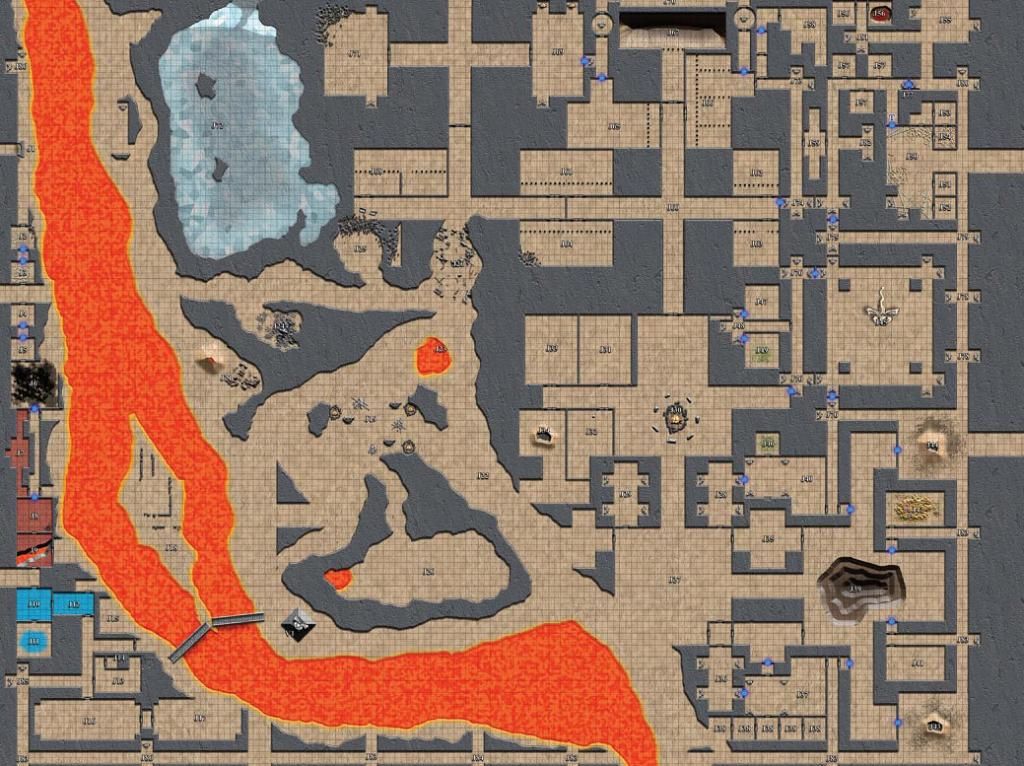 So after water and wood, now we've got a place for your fire-type pokemon and I can assure you we're well back to amusing shittiness and away from dull mediocrity. This Region is called the Pyrefaust and its meant for levels 13-15. The centerpiece of this dungeon is Tyrus the Devourer of Kingdoms, an ancient red dragon. If you're thinking that sounds like quite the challenge for a party of 13-15th level characters you'd be right. I guess we'll see if there's any attempt make the encounter at all survivable. One thing I do like about this Region is the fact that the designers actually came up with a reason why Tyrus is imprisoned rather than simply slain when he was defeated by the celestials. Apparently an unspecified "god of chaos" considers the dragon his spiritual "son" and declared that if the celestials executed him (which was their original plan) he would start a war in the heavens to avenge him. The celestials made a bargain, allowing them to imprison Tyrus for 10,000 lifetimes but allowing him to live. As far as explanations go that really makes sense...but it just makes it a bit more jarring that there is no explanation for the rest of the prisoners. The Region is divided into "rings" which contain different monsters: Salamanders, Behirs, Fire Giants, Magmin, Trolls (god knows why), Azers, Rasts, Wyverns, and finally Tyrus himself. My first thought is that there doesn't seem like a shape for a territory that makes less sense than a ring...but looking at the map, I honestly can't see any patterns that look like they could be described as a ring, so maybe the writers are just doing a particularly bad job of explaining the Region, especially since there is a supposedly "hidden ring" that exists throughout the entire region. J1-J9 A quick look at this section makes it very obvious that the term ring is being applied very loosely. These are simply 9 rooms, mostly interconnected that lie in a straight line along the Western edge of the Region. It is not so much a ring as a pair of duplexes. Given the number of rooms and the number of rings, each monster faction is going to be inhabiting an incredibly tiny segment of the Region. Despite the fact that the fire salamanders are crammed in such a tiny area and consist of about 20 individuals (the vast majority of whom are the small flamebrother version of salamanders) the writers decided to spend 4 long paragraphs describing this groups culture, caste system and leadership. They also don't seem to grasp that flamebrothers are actually a larval salamanders rather than just "low-ranking" normal salamanders. The first room is one of the entrances to the Region, a large portcullis trap. There's a bit of ominous script on the archway and if the PCs step through the portcullis falls, sealing them in. If the trap is disarmed the portcullis will still fall, it just will do so several minutes later and won't hurt the PCs. Of course, the writer's don't bother specifying what material the portcullis is made from, a DC for lifting, or anything of the sort. Apparently they just intend for you to never go through the gate again. This can be really tough if say one of the PCs is going ahead of the others (say a rogue or ranger scouting ahead), forcing a split in the party. And of course it comes off as particularly stupid when you consider that this is just one of 9 different entrances into this Region. Why does this single entrance from the NE side of Region I have a fancy arch, inscription and portcullis (which has apparently never been set off in the centuries since the earthquake. Odds are good that the PCs won't even come in from this entrance and it will amount to nothing (or perhaps it will block their way back into the Region). The salamanders the PCs encounter are, for the most part, completely no threat to PCs of this level. The flamebrothers just don't have the hit points or attack bonus to seriously endanger anyone, especially if the PCs are prepared with fire resistance spells. We have another room where a group of flamebrothers are trying to kill a Pseudodragon. This pseudodragon was apparently imprisoned in the dungeon by the celestials because they mistook it for a wyrmling red dragon. I've insulted the celestials intelligence a lot already, but this has to be one of the worst examples of divine stupidity. A wrymling red dragon is a medium sized monster with flaming breath. A pseudodragon is a tiny, good-aligned dragon. That's like somehow mistaking a slightly larger-than-average housecat for a full grown mountain lion...except the housecat is telepathic and begging you not to stick it in the zoo's big cat house. The next room consists of a trap set by the salamanders involving covering a massive room (the largest in the their territory) with oil and tar, then having one of their number jump into the oil and igniting the room. So...the first question is why waste their largest territory on a low-damage trap that wouldn't even threaten the other inhabitants of the Region. The second question is how the hell did monsters with a body temperature in the thousands of degrees collect enough oil and tar to cover a room and avoid setting it off (this room is also splitting the salamander territory right in half, making it impossible for them to cross from one end to the other so long as the trap is here). The Salamander Lords who rule this region are three Noble Salamanders who may be willing to offer the PCs some kind of work (despite the fact that in order to reach them the PCs will probably have literally slaughtered every single subject these lords have). Apparently the Azer stole an amulet from them (not clear how this is possible considering all the other hostile monsters between the azer and the salamander) and the salamander lords will offer anything they own (other than their spears) to get it back. Of course, their spears (a pair of +2 spears and a +3 spear of flaming burst) are the only remotely valuable objects they own...otherwise their only valuables consist of about 1,200 gp in loose coinage and some +1 longspears belonging to their subordinates (who the PCs will have already killed). Terrible encounter editing is rearing its head again. Most of the encounter conditions are either unexplained or completely arbitrary (for some reason, 50% of the salamanders are completely fearless). The encounter with three CR 10 noble salamanders is listed as EL 8. J10 to J16 This is the Behir territory, the second "ring", and like the first ring it is in no way shaped like a ring. It is just a small cluster of rooms in the SW corner of the region, immediately south of the salamanders. It's unclear what Behirs are doing living in this area: it's established in the description that they hate the presence of the dragon Tyrus and are overwhelmed by the heat...but for some reason refuse to simply leave. Like the salamanders, their territory is ridiculously tiny: there is only a single room large enough for one of them to stretch to their full length, the rest are a good 10 feet too small for even one giant lizard. Although upon examination there actually seem to be only 4 behirs total. The first three rooms are filled with a couple of feet of water which eventually becomes waist high. It's not really clear how this is possible...are these rooms bowl-shaped for some reason? Is the floor below the level of the doorways? How is the water not simply flowing out as soon as the doors are opened? The description also indicates that the behirs filled the rooms with water to help keep themselves cool...but how do they do that? They're giant snake-lizards, how are they carrying water? And from where? The behirs have apparently also created several traps in the area, another baffling ability. And I don't mean things like pits clawed in the ground or rockfalls...they've created purely mechanical traps that do electricity damage. So not only have the behirs managed to create highly sophisticated and subtle mechanical devices but they've also managed to invent amazingly high-powered capacitors. And they don't even have thumbs! The actual trap design (from a game mechanics perspective) is also pretty bad: it's an electrified floor which uses a melee attack (not a touch attack) but also allows a reflex save for half damage. In another room we have a behir who is somehow hiding in 20 x 35 room filled about 3 feet deep with water. That's a 40 foot long, 2 ton lizard trying to be sneaky. Finally we have two behirs fighting a third, bigger, behir for possession of a chaos diamond. It's unclear why 4 disagreeable reptiles qualifies as its own "ring". J17-J29 This area is home to fire giants and magmin. The magmin apparently worship the dragon as a god and every day they come out to praise him, their priestess using a necklace of fireballs as a holy symbol. How that's possible when a necklace mass detonates upon exposure to fire damage is unclear. It's a bit of a moot point since this is only described in the flavor text preceding this section, the priestess is never given any stats and there is no indication of the necklace being available as a treasure. The magmin are actually a really dangerous encounter through sheer numbers: there are a total of 100 magmin and they continue to emerge from the lava and throw themselves at the PCs until they all die. With fire resistance and some decent non-fire based area of effect spells the PCs can win...but 100 opponents can easily cherry-pick a group to death, especially given the magmin's touch attack, combustion and fiery aura. The intent of the writers seems to be that the PCs should retreat north towards a bridge over the lava river...except the lava river is where the magmin are coming from. That means they seem to think the PCs should somehow retreat through the magmin horde, a feat that borders on impossible given the rules for moving through opponent's spaces. It's also odd that the designers didn't use some of their own rules. In the back of the WLD are rules for "mobs", which are basically swarms of humaniods rather than tiny vermin. An encounter like this seems like a perfect opportunity to use those rules but they haven't been brought up (in fact, at no point so far has there been anything with "mob" stats). Crossing the bridge brings the PCs into fire-giant territory...but more confusingly it brings them face to face with a map-feature labeled "V1", a more or less impossible to miss structure that is not at all described here. A bit of investigation reveals that it is actually the entrance to the "hidden ring" which is part of a "Map V" that is not mentioned until the very end of chapter J. There is no indication prior that there is a Map V so hopefully you read through this entire chapter in full before your PCs find this and want to know what it is. Ignoring the secret map for now, since the PCs won't be able to open up the pyramid-thingy here without something belonging to the Azer, we have the fire giant's territory. They're forging stuff, have an unhealthy fixation on "steel" and generally act like big dwarves. Other than throwing boulders onto anyone crossing the bridge they're surprisingly not that hostile. In their forge they'll ignore any PCs walking around, and if the PCs start messing with their stuff they'll spend two rounds yelling at them to stop before actually attacking. Unusually mellow guys. Apparently the fire giant warriors toting greatswords and boulders are also just idiots, because it turns out the giant smelters handling iron ore have invented what is by far the deadliest of weapons. A normal giant-sized greatsword inflicts 3d6+10 damage, and a thrown boulder inflicts 2d6 +10 (plus 2d6 fire damage). However an iron ingot will inflict 8d6 +15 in melee or 8d6+10 thrown. Why bother smelting them, you've already got a weapon that rivals a titan's warhammer? Whether a fire giant is willing to completely ignore intruders or will attack and kill on sight seems to vary every other room. The fire giant queen though is surprisingly receptive to strangers wandering into her court unannounced and will even offer the PCs work, killing the leader of the trolls. I've mentioned in the past that the encounter editing here is particularly bad, comparable to areas like Region A and B. Here's a good example, try and parse this sentence: "Each of the gleeful shapes elementals is trapped with proximity triggers by the efreeti." The trap the gibberish is referring to is an incendiary cloud trap, which for some reason is labeled "100 feet deep". In fact this entire encounter reads like it was written by someone with a shaky grasp of the language: "After a statue triggers, there is a 25% chance (per statue) that it triggers as well. Whether this is a defect of the statues or not, is open for debate. PCs spotting one trap, can spot them all." Again, the really notable thing about this area is just how few giants inhabit it. The fire giant queen apparently rules over a domain consisting of 9 subjects, other than herself. J30-J34 This area is full of trolls...why they would at all choose to stay here is immensely unclear. In just about any other region they would thrive, but apparently they'd rather stick to the one place that is full of their most well-known vulnerability. Fortunately (?) they have the support of an efreet who they accidentally freed when hiding from the fire giants. The efreet is a bit of a munchkin and has basically been doing nothing but granting the trolls wishes for better stats: improved regeneration, fire resistance, better natural armor, claws and spell resistance. It's actually an interesting sort of double-bluff. By now the PCs are certainly aware of the fire theme of the Region and will probably have adjusted their spells and tactics to maximize cold damage and minimize their fire-based attacks. When they see a group of trolls they'll probably be kicking themselves for not having fireballs on hand. They may very well throw any remaining fire based magic they have at them, including magic items, only to be shocked when the trolls resist it. The changes to the trolls seem to be +8 natural AC, Claw threat range changed to 18-20, Fire Resistance 10, +2 hp/round regeneration, Spell resistance of 17 and maximum hit points. This seems like it merits a bit more than a +1 to their CR (especially given the synergy of fire resistance, spell resistance and increased regeneration), but CR 6 is what the writers went with. The troll leader, Fedj'ik has two fighter levels and even more buffs and resistances...despite this his CR is 7, which is the same as an ordinary, unbuffed troll with two fighter levels. The room also has a chest containing the efreet's lamp. Normally I'd point out that the chest's defenses are impossible (5 fire trap spells, one on the lock, one on each hinge, one on the lid and one on the lamp inside) due to the rules of the spell...but fire trap is such an amazingly weak spell for its level I'll let it pass (seriously, why is fire trap so drat weak?). I will bitch about the lamp, which the text states functions "exactly as a djinni's lamp" except of course this is not a magic item that exists. Presumably they're referring to an efreeti bottle, which would make sense except the efreeti's behavior makes it clear that this isn't the case either (since he is neither forced to return after 10 minutes, or attacking the trolls randomly). J35-J49 This is the Azer mining encampment. Like the trolls the Azer are led by a powerful magical being with a hidden agenda. This time it is an ogre mage. To the Azer he is surprisingly benevolent and kind, but apparently it is all a ruse for he intends to free Tyrus from his prison in the Region. However, the ritual to do this requires a vast number of precious gemstones. Thus he is manipulating the Azer to secure these valuables. For some reason this section has several rooms that are unlabeled, despite having things like secret door entrances. Yet more terrible cartography. The gibberrish-filled trapped statues are here as well, the same terrible description simply copy-pasted to these rooms. There is also a chamber related to the "hidden ring", where the PCs will see a projected image of a beautiful woman who appears with a cryptic message and a plea for help. This is actually a vampiress who is locked away in the hidden section and is attempting to trick the PCs into solving the celestials riddles (because riddles are a great security system) to free her. For some reason she's not being very helpful about it, using poetic and cryptic phrasing rather than just outright stating "turn that statue 90 degrees, you'll free me!" This leads to a series of rooms each of which have a statue of the vampiress and a switch. A Lawful good character can flip the switch and once all 5 have been flipped the first lock on the crypt is opened. Again...seems reaaally over elaborate on the part of the celestials. We also have another case where the writers cannot be bothered to keep count of their own mcguffins. Let me illustrate: 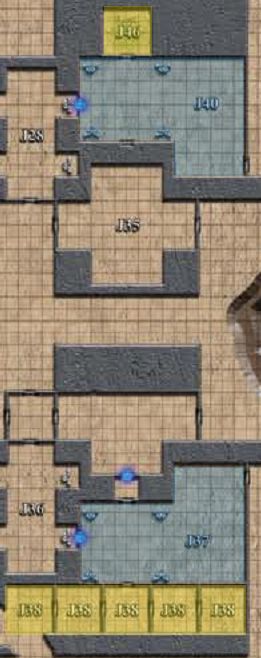 You see the two rooms in blue? Those are the riddle rooms. Each of them has a vision and a simple statue moving puzzle to unlock the door to the yellow areas which have statues of the vampiress and switches. Obviously the intent of the designers was to have most of the switches solved at once, but then forcing you to hunt a bit for the last remaining switch (not that the PCs have any way of knowing how many switches are needed or what the switches do). However, every description very clearly states that 5 switches will release the lock and allow the crypt to be opened. If you count, the yellow rooms in the south, there are five already...meaning that the rooms to the north are completely pointless. Once you've opened the southern rooms with the puzzle you can access five switches right away and remove the lock...but look at the SW most yellow room, note it's lack of walls. That room is actually fully open to the rest of the Region, and it has a door that leads straight to the other 4 switches...which means you don't even have to solve the room's puzzle at all! Anyway, moving on...there's a gem storage chamber which contains a massive pile of rubies sapphires emeralds and diamonds. Each gem is worth between 50 to 150 gp and the party can collect 3d6 a round...but the designers neglect to actually tell you how many gems the room contains. Not even a ballpark figure. I can only assume from the area they fill on the map it must be in the millions. This is pretty important when you consider that at this level these gemstones (diamonds especially) are very important for spell components (raise dead for instance). The writers also mention that these gems can cut the cost for creating a magic item in half...neglecting to realize that its impossible to effectively make magic items in the WLD because there's no way to purchase reagents and materials. They're too minor to mention every time they come up, but again I've got to reiterate this region is terribly edited. Spelling mistakes and grammatical errors are present in practically every description. Oh and as a minor footnote it's mentioned that the azer have dug into the molten core of the earth (because the WLD writers have a worse grasp of geology than they do math and grammar) and that in about two months this region will basically sink into the lava. The PCs better get those gems out while they can. Finally we have the encounter with the ogre mage who is apparently just on the verge of completing his ritual. Once the PCs enter the ritual chamber they have 15 rounds to defeat the azer guards or the ogre mage completes his spell and transforms himself into an elemental being of divine fire, heads towards the nearest lava pit and jumps in, swimming upstream to Region N to access a tunnel leading back to Region J and to Tyrus's glacial prison. There he'll burn himself out to melt the ice and free the dragon. Terr'kaal is a 7th level Cleric Ogre Mage, and as always the WLD writers like to add random abilities, so he has Frightful Presence, Blindsense, fire resistance, and extra spell like abilities (polymorph, delayed blast fireball and scorching ray). This is not accurately reflected in his CR, needless to say. If he succeeds in his ritual his fire elemental form has double HD (24 vs 12), better AC, speed attack and damage, plus keeping his special qualities, spells and spell like abilities. Despite this his CR drops by one. J50-59 This area is the lair of the rasts (for those that aren't familiar with obscure monsters, it's a weird flying claw-covered ash-monster). They were apparently put in the dungeon by the god of fire and trained by the celestials as guard dogs. They're called Godrasts and are size Huge and have the Celestial template. Their stats are pretty badly mangled (their attack bonus is listed as +31 when it should be +23) but given the lack of optimal armor and the number of attacks they get (5) and their huge grapple modifier (correctly listed as +30) they'll probably quickly snag most or all of the party and begin draining their blood. Remember how I mentioned those statues and switches earlier? Well apparently I was underestimating the incompetence of the designers, because there are more here. Apparently they were intending to scatter these switches and puzzles all over the region (they're really bad riddles by the way) and just accidentally put 5 of them all together with the very first one, rendering all the rest moot. So all in all, according to the map, there are about 9 switches. There is also a Rast Queen...who actually has about the same stats as a regular "godrast". I was expecting something more like a xenomorph queen but she just has slightly higher DR and drains blood a few points faster. J60-J71 This "ring" contains half-fiendish wyverns born from a god's hateful thought. Apparently the celestials killed most of them but for their own bizarre reasons they imprisoned the rest here. The wyverns are actually pretty intimidating. They're size gargantuan and half-fiendish 21 HD wyverns. Because of the extra HD and their con boost from the two size increases, their poison is actually incredibly deadly (DC 29 fortitude save, making it out of reach of most 14-15 level characters (a dwarf fighter with 20 Con at 15th level has +14 to his fortitude save, meaning he'll fail on a 13 or lower). 4d6 con damage from a single sting (and with a +31 attack bonus the wyverns have no problem hitting) can easily kill even very powerful characters (that 15th level dwarf wouldn't be expected to live past 2-3 stings, and that's not even considering secondary damage). Fortunately the wyverns are all caged. We've got one cage holding 4 at once (a group easily capable of inflicting a TPK), another that holds a single suicidally depressed (I'm not even kidding) wyvern. There are a few others scattered in other cages as well as some cages that contain the levers to unlock their cells (for some reason the levers are also in cages but the cages are open). So, while the PCs can easily avoid the fight if they pull one of these unlabled levels they're more or less screwed...the wyverns have tons of hit points, great saves, spell resistance and deadly, deadly attacks. Later on we have a safe zone produced by a pair of petrified angels, and a couple of rooms built out of the bones of ice devils. The room contains a statue of an ice devil...which is apparently an actual ice devil. First the statue has to be melted and then the devil is freed and once it is killed the room is purified (this is important for some reason). This is practically impossible though the statue has a hardness of 20 and 500 hit points (so basically immune to non-adamantine weapons, and the majority of spells), also every 5 rounds a random cold spell is cast by the statue, hitting anyone in the room. It won't take long before players die or retreat (or just run out of spells to try and affect the thing). By the time they inflict enough damage to melt the ice the fight with the ice demon itself will probably be impossible. The Chamber of gently caress You This one deserves its own individual entry. We've got one of those utterly batshit celestial "puzzles" that seems to serve no actual purpose: A room with the label "the death of fire lies within" (not one for clarity, those angels). It's got a huge pair of locked double doors, although it can also be accessed via a secret door on the opposite wall. Upon entering all exits seal. Breaking the seal takes a DC 50 strength check (there is no information on the hit points or hardness of the doors), so its effectively impossible. Written on the inside is the words "the breath of flame blocks your path. Salvation lies in its destruction." The only way to open the doors is to remove all the air from the room. There are two methods for this. The first is a trio of fireball traps on the statues of this room. These traps are "easy" (DC 28) to find, but if your rogue isn't trapped in there with you or if triggering traps doesn't occur to you then they don't work so well. The fireballs are the "safest" way to do it, triggering all three burns up all the air and inflicts around 24d6 damage (which most characters will find survivable at this level, especially with preparation against fire damage. The second method basically involves everyone being unconscious forever, because much like the pressure rules in Region L the designers don't really think about how much damage accumulates over time. You see the room is filled with several braziers and so long as they keep burning they'll slowly consume the air. This takes about 2 hours, and after 105 minutes the PCs will start to suffer the effects of smoke inhalation. What are those effects you might ask? "A character who breathes heavy smoke must make a Fortitude save each round (DC 15, +1 per previous check) or spend that round choking and coughing. A character who chokes for 2 consecutive rounds takes 1d6 points of nonlethal damage. " So, that's 15 minutes, or 150 rounds. After 20 rounds the fortitude save becomes effectively unmakable (DC 35) and every 2 rounds after that the character takes 1d6 nonlethal damage. that's 130 rounds left at that point, or 65d6 nonlethal damage. Keep in mind you spend the entire time coughing and choking, it's not possible to take actions to heal. that's an average of 228 nonlethal damage. Lets use that dwarf from my wyvern example, a 15th level, 20 Con dwarf fighter has, on average, 162 hit points. If he had max hit points every level he would still have only 225. In other words, the chance of anyone in the party remaining conscious for this time is basically zero. Now, by a strict reading of the rules (this is from the SRD, not the WLD) its actually not possible to die from smoke inhalation. However, most of these continual nonlethal damage sources (such as cold, heat, etc) will start to do lethal damage after you hit zero (which would mean most of the non-dwarf fighters would be dead). However, it doesn't actually make a difference whether or not the smoke damage ever turns lethal...because you're never leaving this room once you start choking. Nonlethal damage recovers at the rate of (level)/hour. So that theoretical 225 hit point dwarf would be back on his feet in an hour with 210 nonlethal damage. Anyone else is definitely going to be out for at least a couple of minutes. But here's the thing, the doors open and air rushes back in...and they remain open for 3d6 rounds. Which means by the time anyone has even the slightest chance of waking up will still be far far too late to escape. The burning braziers also relight. So the dwarf still has about 45 minutes until the smoke starts choking him again. he might be able to scrape together enough healing potions to get his companions conscious again (probably not though...most people will need about 100+ points of healing to regain consciousness) and maybe this time they figure they'll trigger the fireball traps...that 24d6 damage won't be lethal to most 15th level characters but you can be drat sure that combined with any remaining nonlethal damage it'll take everyone back to unconsciousness. And now they're even more hurt than before, so no one is likely to regain consciousness. Which means the room just keeps burning up all the air, adding more nonlethal damage, opening briefly to let in more, and then locking once more...keeping the cycle going indefinitely and the PCs locked in stasis forever until some random encounter puts them out of their misery. And so, what does this phenomenally awful room guard? Is it meant to be a prison that for some reason keeps opening its door? Is it meant to block passage to some celestial fortress? Nope. It doesn't actually seem to have any purpose. The only thing of significance is a box which can be located under the floor. The box will strike any non LG individual as though they were hit with a Holy Axiomatic Weapon (it does not tell us what type or weapon, or why it couldn't just give a number). within the box is a ring of regeneration, greater ring of energy resistance (fire), and a ring of evasion. If all three could be worn at once it would probably allow the wearer to break the cycle...but that relies on them being found and worn by someone with enough hit points to even wake up from the sheer volume of non-lethal damage. J72: Tyrus Himself Tyrus, the ancient red dragon, is imprisoned on a plateau overlooking the region surrounded by a magical wall of ice. The prison has weakened enough to allow him to remain awake within the prison and to use his spells (such as charm) on the creatures below (or at least so the writers claim, forgetting charm is a very short range spell). This crack also allows the PCs to enter the ice wall themselves. However, what isn't clear is where the crack actually is...There's a tunnel from Region N that connects, but the description makes it clear that this isn't the only entrance. It isn't marked on the map and the room description is far too vague to make out any details on its location. The dragon has a major image of himself sleeping on a pile of gold while he hides in a corner, waiting to ambush the PCs. If the PCs attempt to just straight up fight Tyrus they're dead. He is miles beyond the ability of a 15th level party. The only reason his presence is at all reasonable is that the PCs can always choose to simply leave the moment they see him, or if the fight is going badly (but considering how powerful Tyrus is...that probably means half of them are dead already). And of course, as always the tactical suggestions are utter poo poo. The writers suggest that once Tyrus engages in combat he casts mirror image (as opposed to the greater invisibility spell he has), hover in the air and cast magic missile. The ancient red dragon...casting magic missile...the spell for plinking goblins to death. really?! Several other suggestions involve spells that are good...but that Tyrus doesn't have (like chain lightning). He'll also apparently use his spell immunity (which is hardly necessary with an SR of 28) to immunize himself against lightning bolt, magic missile, and vampiric touch. The first one makes a little sense...but he's got 603 hit points. He doesn't have to worry about magic missile and any wizard stupid enough to get close enough to cast vampiric touch won't live to regret it. The intent seems to be that the PCs will come back once they're higher level...but if Tyrus blocks the exit (or if they fail to prevent the ogre mage from freeing him) they're basically doomed. And of course, there's no mention made of the fact that Tyrus' death at the hands of the PCs will spark a divine war. Tyrus's treasure is, of course, pure poo poo. He has almost a quarter million gold pieces which do no one any good. 345 gemstones with no value or description listed. 18 dwarven breastplates (wooooo...), 12 huge longswords, a fake mithral orb which if used to open the hiden crypt will explode. Why this exists and why tyrus has it is never explained. This CR 23 encounter with a dragon has only one. loving. Magic. Item. Guess what it is A gemstone of fortification. Let me elaborate on just how stupid this is. The gemstone of fortification is not in the SRD, it's an item from the Draconomicon, meant to be imbedded in the scales of a dragon and granting a fortification effect (similar to armor of fortification). For any other creature than a dragon, getting it imbedded requires at least a limited wish. At least I'm assuming that's what they're referring to, the text provides only a name: no description or source (and considering until now all items have been from the SRD this would be pretty important). On top of that, the writers never mention in Tyrus's description the gemstone is "equipped" (which is pretty drat important) or what level of fortification it is (which is even more loving important). So, to reiterate. After fighting an ancient dragon, the most powerful dragon in the dungeon, and looting his hoard the PCs only reward of any value is a magic item from a book that they may not have, which they cannot equip, and whose effects are not even quantified. J73-J86 This area is a row of trapped statues all along the south and east corridors of the region. These are nearly impossible to disarm traps (DC 50, twice), and if you try to disarm it and fail by 30 or more (very likely for a 12th level rogue, who'll probably only have a +20 or so to disable device) you turn to stone with no saving throw. If you fail by less than 30 the trap triggers itself twice with a -4 penalty to any saves to resist it. (the damage on one trigger tends to be in the 16d6 range). Other than their obscene deadliness they're fairly boring. V1-v8 This is the "hidden ring", a crypt hidden below this area (which is a little bizarre when you consider the entire regions seems to basically be a thin layer of stone on top of a sea of magma). It was apparently used to hold a celestial who fell in love with a pit fiend and became fallen...hey does that sound familiar? It should because its the exact same things that happened in Region H with Diantha. Except this time the celestial becomes a vampire instead of a devil. I've already pointed out just how stupid this "prison" is, considering its locks seem to basically just be a series of zelda-style block puzzles in place of anything actually secure. I also mentioned that the vampiress has been projecting visions of herself to try and "help" solve the puzzles sealing her tomb so she can escape. Except...she never does. You see when you enter the crypt the doors seal behind you, permanently. The only thing that can open them is a wish spell. Considering its very obvious that the seals have been removed (doing so triggers a very loud singing for 5 rounds), she should be fully aware that someone might be coming to her tomb and waiting by the entrance to get out. Instead she lurks in the final chamber and just lets the PCs get permanently sealed in there with her. The only way out is a full wish spell. Fortunately the has a ring of three wishes (well, two wishes...or one, the text contradicts itself in several places), but apparently she cannot use it to escape (there is no explanation as to why). She wants to hire the PCs as a hit squad against the Solar (how they're meant to accomplish that is unclear) and to bring the solar back to her once he's dead (he was apparently the cause of her imprisonment). It's kind of a sad plan actually, considering she just plans on trying to kill the PCs when they return...but how exactly she expects to beat anyone capable of taking down a Solar is unclear. She herself is a "celestial" vampire. She seems to basically just be a human with 6 fighter levels and 10 sorcerer levels and the vampire template. A combination that doesn't stand much chance against a 14-15th level party. This makes her one of the easiest "boss" fights in the dungeon. That's all for Region J. Glad we're back to having really, really terrible content to mock again. oriongates fucked around with this message at 07:41 on Feb 6, 2014 |
|
|
|
Mr. Maltose posted:Castle Falkenstein, buddy. Buck Rogers XXVc is fairly well balanced too (despite some issues with distribution of skills). But then it's just 2nd Edition AD&D with a skill system bolted on, so Pondsmith doesn't really deserve much credit for balancing it. And I'm someone who bought the DBZ game without really knowing much about the show. I was younger, I had disposable income to waste on stuff like that.
|
|
|
|
Quick request: When you do these, can you upload a picture of the maps as well? It's a bit hard to follow otherwise.
|
|
|
|
Lynx Winters posted:
I just went looking for a mirror of Buttlord GT and it breaks my heart that it seems to have been scoured from the internet 
|
|
|
|
Majuju posted:I just went looking for a mirror of Buttlord GT and it breaks my heart that it seems to have been scoured from the internet
|
|
|
|
BRADICLE thank you!
|
|
|
|
Lynx Winters posted:DBZ Does the game's version of the afterlife have HELL or the safe for saturday morning HFIL? TV censored DBZ was the best.
|
|
|
|
Oh man, I think I have DBZ in a box somewhere. I guess I don't have to feel so bad about never being able to play it...just buying it.
|
|
|
|
jadarx posted:Does the game's version of the afterlife have HELL or the safe for saturday morning HFIL? TV censored DBZ was the best. It's HFIL. Everything in the game is based on the Funimation dub because of some janky license issues. I'll try to dig it up, but there was was some post on RPGnet from the guy who wrote the unreleased Cell Saga book and worked on the Androids book where he said that each book could only use material from the story arc the book covers for game mechanics. Likewise, they could only reference things in past story arcs if it was in a flashback in the Funimation show. I need to track down that post again because he also linked to his name-changed manuscript for the Cell book. He also stated that the game writers for the supplements knew the core rules were dogshit and had to pretend they worked anyway. Thanks, Maximum Mike!
|
|
|
|
Rockopolis posted:Oh man, I think I have DBZ in a box somewhere. I know I have a copy still. It's in the "get rid of this stuff" pile next to my bookcase.
|
|
|
|
Lynx Winters posted:It's HFIL. Everything in the game is based on the Funimation dub because of some janky license issues.
|
|
|
|
Ars Magica: Transforming Mythic Europe As a note - the North sea is borderland territory - it could be part of several different Tribunals, and precedent involving the Isle of Man suggests that it'll be the guys camped out there who get to decide which one it belongs to. Anyway, the Church of Rome, of course, calims universal power in Europe, though the east and Africa are hardly bending knee. But you, Wizard Island, must still come to terms with them. And with God. See, you've made a kingdom - and all kingdoms have a patron saint. God might grant you Saint Brandan, the patron of Irish sailors and arguably the saint of oceanic islands. Or maybe the Blessed Cyprian - he might perform a miracle and become a saint. In life, Cyprian was a penitent magician, and House Jerbiton has been watching for his saintly miracles for centuries. Perhaps Saint Nerius, who was in life a Criamon magus and who is the saint of pious magi, though not recognized by the Church. Perhaps Saint Nicholas, the patron of sailors, and whom many local traditions hold is followed by a little demon that torments naughty children. Or maybe you'll be able to pick your saint by questing for their relics, or even creating a new saint, if someone of great piety dies during the creation of your island. But God is the only one keeping an eye on you. There is a demon appointed to subvert every earthly kingdom. Some say that all of them were Watchers, who fell by marrying into the Race of Men. Whatever the case, however, a demon of a kingdom has great rank in the Infernal hierarchy, and a horde of demons of all kinds will be rushing for your island, vying to become its personal corruptor. Two of the three most potent claimants will probably have their own kingdoms already, but are the least of such demons, for their kingdoms have fallen to the sea. They will use other demons, humans and even you as pawns in their battles to become the patron demon of your new land, and eahc has demonic servants. The book presents three demons to be potential patron-demons. First is Rumael, the False Neptune, who claims to be Neptune himself, the creator and destroyer of Atlantis. Magi with even the most cursory education will note that Atlantis was ruled by Poseidon, not the Roman Neptune, and Rumael is either unaware that he's using the wrong version of the god, or is including the flaw to mock human stupidity, blinded by his own pride. The False Neptune is sered by the Wicked Boys of the Third Square, who take the form of tiny yet muscular men with the heads of horses, who wear armor made of bronze plates, and who bear pitchfork or perhaps trident designs on their backs. The Wicked Boys wield tridents, may walk through solid objects - including weapons and foes - and are vulnerable to even small fires. Rumael may control storms, water and horses, to better his disguise, but all are clearly Infernally tainted if he does not work to hide them. He may also summon wealth to give to people, though always from wherever its absence will make the most trouble. Rumael appears as a bearded man in a robe, armed with a triden, with neddle-thin fish teeth. He is weak to the touch of flame. Rumnael is accompanied by a horse, often with the tail of a fish, or a dolphin, which in truth is always part of him rather than a seperate being.  The second demon given is Neqael, the Lady of the Purple Bower and Corrupter of Lyonesse. She takes the form and has the reputation of being a fae-blooded but mortal noblewoman of immense wealth and wisdom. She is a corruptor of noble etiquette, specializing particularly in the corruption of the emerging principles of courtly love. Her great joy is to suck the meaning out of fine alove, making it a sham and mask for adultery. Neqael corrupted yet did not destory the half-imaginary realm of Lyonesse. Most who are aware of Lyonesse believe it was swallowed by the sea as a divine judgment on its wickedness; in truth, it was destroyed by the demon now known as the Red Knight of Ys. Neqael and the Red Knight despise each other and would even ally with magi to humiliate, harm or defeat each other. Each is aware that magi usually refuse to deal with demons but can pass for human with care, so they may just lie about what they are. Neqael is served by a strange tribe of succubi, who cannot attack those who have tried to seduce them. They may not have sex with mortals, and so instead must manipulate their victims, generally seducing humans in pairs, each using the body of another victim as the instrument of sin. Some of these succubi select particular humans to be their champions and train them in courtly seduction. These succubi are known as the Mavens of Etiquette and appear as beautiful men and women - the women in lace and furs, the men in leather and with rippling muscles. They may change gender at will, and are supernaturally skilled liars. Naqael is superior even to them at lies, may take on any shape and has an immensely potent ability to duplicate divination magic. She appears fairest by candlelight or in her bower, and has milky skin, fair hair and grey eyes. Under direct sunlight, her skin is yellowed and her eyes are hollow. The Red Knight of Ys is known also as the Bringer of Requested Inundations, and he is a demon of drowning. His greatest achievements are the destruction of entire kingdoms, such as Ys and Gwenolod, but he is also responsible for some of the towns that have sunk beneath lakes in the Alps, destroying merchant ships and thousands of people drowned in rainwater butts. However, the Red Knight has a strange compulsion - he may harm people only once a mortal gives him permission. He destroyed Ys, in exchange for a kiss and an unspoken promise of love, gave him the key to the kingdom's sea defenses. He claims his victims deserve what they get and that he is God's chastiser, yet he knows this is false. The mortal who gives him permission must have some social connection to his victims, such that they are betraying the victims. Even a rival covenant, though it betrays the Code to call on him, is not sufficiently intimate a betrayer to allow the Red Knight to bring his floods against the island, though - he needs the family of a magus, the apprentice, the familiar, the lover or the trusted servant. He prefers to kill those who give him permission, but if this cannot be done, he typically selects as his next temptee someone who hates the survivor. There are tribes of merfolk along the coasts of France and even further afield when interacting with breton sailors who claim descent from Ys, saying that they were turned to merrow by God's mercy when the sinners of Ys died. These merfolk have a traditional hatred of the Red Knight, or claim to have one, and would gladly die to see him destroyed. The Red Knight, as a not, appears in empccable, enamled armor or rich scarlet clothes. He is redheaded, with a jaunty moustache and arching eyebrows, and has a roguish and charismatic demeanor. He has no Infernal servants, though he does often travel with a mortal squire or valet. Said mortal generally seems unaware of his true nature. Beyond demons, the Church may well be a problem if your island is settled by non-Christians or heretics. Pope Honorius III is a great crusader-pope, much in favor of the Reconquista, the Baltic crusaders and Cathar crusade, as well as support of the Latin Empire of Constantinople and the invasion of Muslim lands. He won't be bothered by another theater of war. His first move would be to send evangelists to convert the populace, generally the Order of Preachers - that is, the Dominicans - who speak the local language and will martyr themselves if needed. If this fails, he will call for crusade. A crusade could easily expand to target all covenants - those against distant pagans, after all, are always accompaniedb the abuse of conveniently close Jews, who are also unbelievers. If it's clear the crusade will happen, then powerful figures in Guernicus, Tremere and Jerbiton will form a coalition to figure out how to clean up the mess - and their options do include 'kill the PCs and sink the island.' The PCs will, of course, be tipped off by their allies in the coalition and have time to convince an emergency Tribunal not to cast them from the Order. You might sidestep this whole issue, of course, by creating a servitor race rather than using human settlers - a kingdom of intelligent, magical animals will have its own unique and bizarre effects on the politics and theology of Europe, left to the GM to consider. Now, mind you, the pope's resources are stretched thin. Offers of help with other crusades may sway him enough to allow the PCs to name the king he will appont, pick bishops or convince the pope to let the local bishop report directly to Rome rather than an archbishop. Honorius is, however, implacable in his opposition to Jews and Muslims working in Christian royal administrations, particularly in roles involving money. If the PCs promise not to directly employ Jews or Muslims and to add the Order of PReachers in their conversions, then Honorius might be convinced not to order them be expelled or murdered. We also note that a particularly useful role at the moment might be merchant emporium to the north, though in time this will lead to conflict with Venice. At present, they lack the power to send a fleet to the North Seab ut have the funds to bribe the local nobles into fighting for them. Of course, there are covenants who would happily aid the PCs in reprisal against Venice for favors. So, what if we don't want the North Sea? The Atlantic Ocean might be a good spot, given the preponderence of natural power there, but its depth is a complicating factor if you want a big island. It requires a level 40 spell to get a ring two miles in diameter, a level 45 spell to get 22 miles, and a level 50 to get 226. A level 55 spell would create a ring 2259 miles across. It is just over 1500 miles from London to Constantinople, and filling such a ring would be a monumental task in itself. There are a few rocks in the Atlantic to build around, at least. There are the Purple Islands discussed in Ancient Magic, which have auras, vis and trade goods already, but are also ruled by a caste of magicians. That might be a beneft, though - conquering them may, arguably, not break the Code. The Scilly Isles off Cornwall are officially owned by the Abbey of Tavistock in Devon after a land grant by Henry I, but can be bought - with the approval of the king, anyway. It would cost much more for them to no longer be part of the kingdom, however. The Saint Kilda Archipelago, whose largest island is Hirtir, lies far west of Scotland and has maybe a hundred people on it already, descended from Vikings. It is claimed by no outside power, with the possible exception of petty rulers in the Outer Hebrides. The people are nominally Christian, but with many pagan practices incorporated, and the islands are home to several megalithic sites. There are also plenty of islands off of Ireland, some of which are already claimed by magi. Okay, but that's a bit too hard. The Baltic Sea is, on average, 60 paces deep. That means a level 35 spell will make a ring 15 miles across, and a level 40 will make one 150 miles across. Notably, that second one is too big for the Baltic Sea. The Baltic islands are owned and claimed by various kingdoms, though with the obvious exception of Gotland they can be bought for a large enough sum. Bornholm is currently contested by the King of Denmark and the Bishop of Lund, while the Ertholmene Archipelago is uninhabited, but lacks good sea room around it. Or maybe the Black Sea - it's on the edge of the Hermetic world, between the Theban, Transylvanian and Novgorod Tribunals. It averages 1420 paces deep. A level 35 spell will give a ring a little more than half a mile wide. A level 40 will up that to a little over six miles. And a level 45 will give us a little more than 63 and a half miles. There are hundreds of faerie isles in the Black Sea, only one of which is geographically stable: Snake Island, described in Against the Dark. Okay, so...how about the Mediterranean? That means more potent spells - it average sout to 1630 paces deep, with lower wave height than the Atlantic. A level 35 spell will give you just over half a mile, and so on up the chain. There are some islands to claim as a core. There are three small ones near Sicily - Lampedusa, Linosa and Lampione - that are close enough to be contained as a single land. Lampedusa was once a Roman colony manufacturing fish sauce, so maybe an ancient temple could be dug up for an aura. Lampione, according to local myth, was a stone dropped by a cyclops, so might have a Faerie aura. There is one problem - you end up right next door to both the Holy Roman Emperor in Sicily and the Arabic wizards of Tunis. Now, Malta is currently ruled by a count owing fealty to the Holy Roman Emperor, so caliming that would be an act of war. The Balearic Islands are currently an independent taifa, though the local Christians want to conquer it eventually. They have been previously settled by Romans and the structures of that time do survive. Indeed, the place was temporarily a province, with a temple to Mercury underneath what is currently the largest mosque. Magi who seize te islands might be able to make peace with the local Arabic states, as none effectively control them regardless of their claims, and a crusade against them might gain the pope's favor. All of the islands off Greece are part of the Theban Tribunal and many have covenants, so they're unlikely to welcome you. Oh, and the islands off the coast of Dalmatia are not owned by House Mercere, but the Transylvanian Tribunal has granted them all rights to vis from those islands, so don't try there. But, I hear you say! I am a wizard, I want a floating island! And this is certainly possible. You can do this by making your wall a circular cap of pumice, which floats in water. A level 30 spell will make a cap that, if 35 paces at its deepest point, is just under 800 paces wide. Level 35 will give you just under a mile and a half. Level 40 will make one 14 miles across. You'll have to find a way to steer the drat thing, though - perhaps calling a vast magical monster to aid to tow it in exchange for something. You might also make magic items to push, drag or teleport the island around, or just make a spell to control the island directly. Next time: Magic as Technology
|
|
|
|
MadScientistWorking posted:I thought the book references the fact that there were edits done to the Funimation dub. Which is odd, because Funimation put out unedited versions. My college roommate was a huge DBZ fan and he would rant that the Walmart didn't have them all the time. But I think those showed up later in the run (Cell Saga sounds about right), so the license must predate them.
|
|
|
|
Selachian posted:Buck Rogers XXVc is fairly well balanced too (despite some issues with distribution of skills). But then it's just 2nd Edition AD&D with a skill system bolted on, so Pondsmith doesn't really deserve much credit for balancing it. IIRC, one of the biggest examples I can think of is that none of the player races wasn't better than the other. There's no baseline humanity in the 25th century. Even the Terrans, who would be penalized in any other sci-fi game with no bonuses, receive a different set of bonus to their constitution because the harsh post-orbital-war and subsequent occupation by the Russo-American Mercantile's Martian forces than the other human variants. Even the Desert Runners, the genengineered wolf-human hybrids that work herding livestock on Mars' partially-terraformed surface, have weakened saves to offset their Strength and Dexterity bonus because human-normal air pressures (i.e. 90% everywhere the players will go and fight in) is oppressive to them, so much so that they usually have to wear oxygen masks like they're going up the Himalayas.
|
|
|
|
Kavak posted:I have a vague outline of South American history in my head, but everything between the early colonial period and the breakup of the Spanish Empire is a total blank. Halloween Jack posted:I took a Latin American History class in college, but not only was it an overview of one-and-a-half continents, we only learned about the postcolonial era. I'm Argentinian and I can confirm that we do not learn anything meaningful about the pre-1800 era over here unless you take college-level courses with latin american history classes. It is every bit as ridiculous as it sounds.
|
|
|
|
I wish someone would take another crack at Buck Rogers XXVc. I know nothing about Buck Rogers, but if I'm not mistaken, didn't they take a pretty light series and turn it kinda dark and grim and serious? And speaking of baroque sci-fi, I can't wait to get done with Everlasting so's I can bloviate about Dune forever and ever and ever.
|
|
|
|
Halloween Jack posted:I wish someone would take another crack at Buck Rogers XXVc. I know nothing about Buck Rogers, but if I'm not mistaken, didn't they take a pretty light series and turn it kinda dark and grim and serious? People keep promising to and never following up. Maybe I should. (promptly disappears for six months) I'm not really sure your characterization is accurate, though. Pulp adventure back in the day wasn't necessarily "light." XXVc was, however, a weird melding of '30s pulp sci-fi tropes (rocket ships! jetpacks! jungles on Venus!) with '90s cyberpunky tropes (AIs! sinister megacorporations! environmental devastation!), resulting in something that was neither fish nor fowl.
|
|
|
|
GimmickMan posted:I'm Argentinian and I can confirm that we do not learn anything meaningful about the pre-1800 era over here unless you take college-level courses with latin american history classes. It is every bit as ridiculous as it sounds. In some weird way, I'm glad to learn this isn't just an American problem.
|
|
|
|
Halloween Jack posted:I wish someone would take another crack at Buck Rogers XXVc. I know nothing about Buck Rogers, but if I'm not mistaken, didn't they take a pretty light series and turn it kinda dark and grim and serious? I don't know too much about it either, but from what I gather, each various incarnation of Buck Rogers-- the 1920s/30s newspaper comic, the TV show with Gil Gerard and Erin Gray, TSR's XXVc setting and, to go full circle, High Adventure Cliffhangers-- is more or less a reimagining/continuity reboot. Sure, there's Buck, and Wilma, and most of the recurring characters, but the sci-fi aspect covers different terrain in each various incarnation. You know, this is making me want to actually do a writeup for HAC.
|
|
|
|
I love to see the summaries of foreign games out there. It reminds of in Pyramid magazine where they had a article with various game designers discussing the future of the hobby, and Steve Jackson discussed internationalism (naturally, since they were working on In Nomine), but it was still a good while before we saw the rush of Eurogames, but even with that, we haven't seen that many foreign RPGs (at least, compared to the number out there). It's great to see Japanese games come over, but I'd love to see more corners of the world export their elfgames. And yeah, we learn Cortez and conquistadors in the US, and then essentially fast-forward to Iran-Contra. Hell, we don't learn poo poo about Canada or Mexico, our immediate neighbors.
|
|
|
|
Lets be honest, we barely learn poo poo about our own country except the highlight reels of all the wars we won/lost until undergraduate classes. This certainly isn't a US problem alone, either.
|
|
|
|
Mr. Maltose posted:Lets be honest, we barely learn poo poo about our own country except the highlight reels of all the wars we won/lost until undergraduate classes. It depends on what classes you take and what school you go to, to be fair. I took an accelerated curriculum in high school because I qualified. Not to bore you with the details, but over three years we did take a pretty in-depth look at the culture and history of many nations ranging from select nations of Africa to select nations of the Middle East to China to Japan to all nations of Europe and then to the Americas. It was headlined by a two period class (about an 1 hour and 30 minutes) taught by two teachers with one focusing on the history of the nation while the other focused on the literature. In 10th grade, a third period was added to study the history of western art (from Mycenaeans to the impressionists) and western music (Gregorian chants to rock 'n' roll). Then, since the accelerated curriculum ended before senior year, I took an advanced placement course that detailed the evolution of America's government. I'm sure other nations have similar programs and opportunities. Fake Edit: Two things. I hope this didn't come off like I was trying to show off or anything. That was not my intent. Also, if you're wondering about math and science, the advanced curriculum also covered that, but discussing it is kind of irrelevant.
|
|
|
|
Dragonball Z, Brazilian folklore (hope we'll be getting sucuriju gigante in there, by the by), and bomb-rear end Neptune impersonator demons? This thread's been great lately. It's definitely helped push my decision on what to do after Cerulean Seas is finished with. Too bad the best I have to contribute until then is waterlogged fantasy.   Part 4: Clerics, Cities, and Cardboard Cutouts  Religion After six chapters of general new game rules, the actual campaign part of the Cerulean Seas Campaign Guide is at hand. First off: religion! There are exactly nine gods that are worshiped in the Cerulean Seas, which just so happen to coincide with the nine alignments of D&D and Pathfinder. The number of gods is enforced zealously by the Council of Nine, a group of priests who may be of wildly varying alignments but still all agree that pissing off the gods like the drylanders did before they were murdered with the Great Flood is in their best collective interests. There are also specific "official cults" of each of the nine religions that somewhat differ but are still sanctioned by the Council of Nine as a way of allowing specific races and cultures to keep their deities while syncretically fusing them into the greater whole of one of the nine. Can you really be considered a cult if you are sanctioned by the world church? I dunno, but it's the term the book uses, so I'll be using it as well. The nine deities are as follows. Keilona: Keilona, the Lawful Good goddess of holy war, sharks, and community cohesion, is depicted as being a gigantic mermaid with a pet Megalodon in tow and has blood red and white as her holy colors. If you couldn't already guess from that first sentence, "Lawful Good" in the case of Keilona's worshipers means "crusading Paladins". They are beloved in cities in spite of this– sure, they’re intolerant zealots who will bring down vigilante justice on “lawless” communities and refuse to stand for any satire or dissent against their religion, but hey, they’ll give you free housing and healing if you are of the same faith! Isn't that just peachy of them? Both of the official cults of Keilona are Lawful Neutral, with the sharkfolk worshiping the Megaladon Jadeel as the truest aspect of Keilona and the nommo feeling they are the only ones who are correct about Keilona's true nature which just so happens to be just as anal and archaic as they are. Poseidon: The Neutral Good and well-bearded god of nature, storms, nobles, and horses, Poseidon in the Cerulean Seas setting is painted more benevolently than one would usually see for a Greek god. His priests revere the hippocampus, shelter orphans, and replace stagnant water with running water because the former is seen as an abomination unto their god. The official cults of Poseidon are the Neutral Good cult of Mahilon, who worship the ancient kai-lio deity Mahilon (who was syncreticized as an aspect of Poseidon) and express nomadic freedom as another key tenet of their faith, and the Lawful Good cult of Neptune who focus on the social well-being aspect of Poseidon over the nature aspect. Mariblee: Mariblee is the Chaotic Good goddess of feykith and magic. Her priests are proponents of magic for the sake of magic and extoll the virtues of being humble but ambitious in learning its secrets. This priesthood also has a vast network of storehouses for magical knowledge from the various races kept safely tucked away just in case of the event of apocalypse or genocide. The Chaotic Good cult of Aear Emerwen is basically the same as the normal priesthood of Mariblee but with a heavy dose of elven nationalism, while the Chaotic Neutral cult of Sedna holds onto the selkie belief in a gluttonous trickster goddess in the only form they could after being forced to convert to the worship of Mariblee. Sebek: Lawful Neutral and well-known as the god whose patrons hold the greatest sway in the Council of Nine, Sebek is seen as an adherent of loyalty and perseverance. Both of its cults are barely autonomous due to the fact that the sebek-ka won't tolerate that poo poo and that the religions in question were particularly hard to subjugate in the first place. The Lawful Neutral cult of Halbok was more or less fantasy-Islam before the drylanders and genies that worshiped it were either killed in the Great Flood or accepted the offer of very limited but nonetheless existing influence within the Sebek religion, while the ancient True Neutral dragon god Scalis was absorbed into Sebekism under the ultimatum of "you should join us, it would be a shame if we let all these dragon-slayers run wild instead, wouldn't it?". Undine: The True Neutral goddess of the ocean, Undine, is worshiped in a manner that can basically be summed up as Taoism but with a hard-on for whales and dolphins as the most enlightened beings. The Neutral Good cult of Hefring is a bit more optimistic and tends to be proactive with helping sailors and fishermen, while the cult of Ondine felt that o was a better letter than u and living out in the wilderness as sea-hippies was the best way to practice their religion. Clagguth: The Chaotic Neutral octopus god Clagguth sounds like a fun guy, given that his tenets are freedom, following your heart, and trolling the priests of other religions whenever possible. His two cults also happen to be the most widely different from each other. The Chaotic Good cult of Guthlak focuses less on disruptive fun and more on good old-fashioned hedonism, while the Chaotic Evil cult of Thulu (Cthulhu is in regular Pathfinder, you know, no need to do the name thing there) is all about torture and vivisection and terrorism and cannibalism and all that jazz. Pluvak: Pluvak's the Lawful Evil god of tyranny. He likes slavery and people sell their soul to him in spite of the fact that they end up getting the raw end of the deal because he's the loving god of tyranny it's right in his name you fools. The Lawful Neutral cult of Dijo is adhered to by selkies and conducts a yearly sacrifice of one of their own members to ensure that the unmelting ever-ice doesn't suddenly fail and cause their iceberg city to melt in the tropical waters, while the Neutral Evil cult of Vanak is made up of undead obsessed with making more undead instead of the whole "deal with the devil" thing. Dagon: This giant sahuagin is the Neutral Evil master of cold, calculating malice. He's still pretty pissed about the whole sahuagin losing the Blood War and being massacred thing, but is willing to play the long game as his priests infiltrate the civilizations of Good and Neutrality. The Neutral Evil cult of Leviathan focuses on destruction and the dark side of war, while the Chaotic Evil cult of Typhon is more or less just regular Dagon worship but with more tentacles due to a love of body modification because chaos. Saloth: Last, and definitely actually the least, the Chaotic Evil deep drow goddess Saloth is literally a non-product identity version of Lolth. Instead of a spider body, she has a spider crab body, because ocean setting! Get it?  Cities of the Cerulean Seas In the world of Cerulean Seas, cities can basically be divided up into (and, in fact, are divided up into) five different categories. First, you've got your sunken cities, which are the wrecked poo poo that's left over from the time of the drylanders that ended up being inhabited by underwater beings. Most sunken cities were made by the Halbokians, the not-Arabs who practiced the not-Islam mentioned in the Sebek entry, and include the pirate strongholds Wreckage and Kraken Bay, the frontier fortress of Borderhold, and the manufacturing hub of Sunken Hope. The second type of city are coral cities, famed for being really pretty and grown as much as they are built, the main examples of which are the cindarian capitol of Corallis and the sea elf capitol of Dar Elestri. Similarly, the naiads grow kelp cities that are typically close to shore and shared or bought out by anthromorphs such as the mogogol and sebek-ka. The last two types of city are unique ones – the selkie city of Lochgelly is the sole example of a city carved out of an icerberg of ever-ice, while the legendary triton kingdom of Shazalar is made out of enchanted glass that’s as hard as steel. None of the cities listed have that much actually said about them, which is both a good and a bad thing in my opinion. On the one hand, it allows you to insert what you want if you're the type of GM who likes to heavily modify whatever you want without diverging from "canon" rather than play a more rigid setting. At the same time, though, if you're in a hurry and want some quick "this is what happens here" hooks then the lone statement that Corallis is the capitol of the cindarians and carefully guarded may not do you much good. This is admittedly a problem with any setting that doesn't assume that the setting is mostly Earth as we know it or historically knew it with some changes here and there, but it's still worth bringing up.  Gamemastering Under the Sea While chapter 8 starts out with a guide to converting existing material to use the racial buoyancy and depth tolerance rules followed by a DIY on how to create the 3D battle mat monstrosity you see illustrated above, I figured I'd actually note it isn't just number crunching and craft store item lists. While probably more suited for the last chapter, the majority of this chapter covers the lands beyond the warm waters of the Cerulean Seas that can become potential adventures. Some of these are in the material realm, including the north and south pole (which we'll be touching in Indigo Ice, of course), the lost world of Devonia where drylanders and prehistoric beasts still live, the fabled large island chain of the Frista Mountains that is sought after by those that can live on land as well as the water, and the mysterious sebek-ka homeland of Tel-Am-Karu. Your options are even broader if you want to get cosmological. While there is no Elemental Plane of Fire, the other elemental planes do indeed exist and have their own pairs of “tertiary planes” – the Planes of Ooze and Magma (Earth), Ice and Steam (Water), and Electricity and Sound (Air). There are also extraplanar oceans in the far realms that play host to a number of creatures from beyond. The fetid and icy sea of Kokytos is the realm of trapped demon, the realm of Lethe is filled to the brim with waters that wash away all memories and allow demons and angels alike to dwell together as blissfully ignorant amnesiacs, the great Okeanos brims with celestial sea life, the acidic Phlegethon is the home to watery daemons, devils are birthed from the titanic rotting swamp of Stygia, and the old gods and demons of the sebek-ka dwell in the great flowing plane of Yam. ======================================================================================================================================== Next time: encounter sea dragons, slimy slug-men, prehistoric placoderms, and more in the last, largest, and my personal favorite chapter in this and any other RPG book: the bestiary!
|
|
|
|
Lynx Winters posted:
|
|
|
|
Selachian posted:People keep promising to and never following up. Maybe I should. (promptly disappears for six months) Yeah, a lot of the "aliens" are just genetically-engineered, mutant, or rapidly-evolving existing lifeforms. What we consider humans are differentiated due to their planetary conditions and cultures: the aforementioned Terrans have increased endurance from surviving and thriving in horrible near post-apocalyptic conditions, the Martians have eugenically-bred and -engineered themselves for social standing with RAM, there's even the Belters, asteroid miners, who are more machine than man. Need "natives" to Mars? Gene up some wolf-lion-human hybrids to round up GMO livestock and patrol the expanses of the Martian surface. Need invading Martian "aliens"? Genengineer some shark-bat people, condition them like Sardaukar from Dune and release them on occupied Earth to root out insurgents. Venusian lizardpeople are merely some sort of GMO slave class that have broken free and trudge around the lowland terraformed jungles. In a way, XXVc is like Eclipse Phase before there was transhumanism.
|
|
|
|
Snorb posted:I don't know too much about it either, but from what I gather, each various incarnation of Buck Rogers-- the 1920s/30s newspaper comic, the TV show with Gil Gerard and Erin Gray, TSR's XXVc setting and, to go full circle, High Adventure Cliffhangers-- is more or less a reimagining/continuity reboot. Sure, there's Buck, and Wilma, and most of the recurring characters, but the sci-fi aspect covers different terrain in each various incarnation. High Adventure Cliffhangers is beat by beat the original comic strip. It's actually kind of neat too. I thought I had done a post describing it's combat system, but I guess I hadn't.
|
|
|
|
 LAST TIME ON DRAGON BALL Z! Alright, so last post I went over the character stats and how to make a well-written, compelling character with realistic motivations. Today we're going to learn how to throw a punch. It's harder than it seems! As a quick recap, the Fuzion system's core resolution mechanic is Stat + Skill + Dice vs a target number or opposing roll. DBZ uses 3d6 for dice, so for those who are math-inclined you've got an average roll of 10 and a range of 3-18. This is pretty important! Rolling a natural 3 is an automatic failure, but rolling a natural 18 is NOT an automatic success. That is also pretty important! As a reminder, during chargen you have 40 stat points for four stats and 50 skill points for six skills. Some of you with high power levels might be sensing a strange and evil power on the horizon. I cast Destructo Disk at the darkness. So it's DBZ, you've done the standing around posing and trying to intimidate each other with vague threats of cartoon-friendly violence and blasting your opponent into the Other World. Now it's time for action! FINALLY! Initiative is determined by highest Mental stat, ties are broken by highest Combat stat, and further ties go simultaneously, because that's not a giant clusterfuck or anything. The basic attack roll in DBZ is Attacker's Combat + Fighting (or Weapon) + 3d6, and the defender rolls Combat + Evasion + 3d6. In most cases, the defender has the chance to roll defense against all attacks in a turn and there is no penalty for multiple defenses. Let's take a second to look at some math. The rolling seems pretty simple, but there's a little problem that can crop up just about the second you start the game. As stated above, most any character can roll on a skill check is Stat + Skill + 18, and there's no automatic success. That means that if the difference between two characters Stat + Skill on any given roll is 19 or more, the only way for the character with the higher total to fail is to roll a 3. That wouldn't be so bad if having a skill difference of 19 was a rare thing, but it's pretty common for it to come up while you're making your characters and only gets worse when people start spending XP. Let's say you manage to kick someone in their stupid mouth. I think I said this in the last post, but damage from melee attacks is a number of d6s equal to your base (PHYS + Fighting) for unarmed attacks, or (PHYS + Weapon + (weapon's bonus damage)) for armed attacks. Special techniques add to the base total, not the adjusted skill total. Ranged attacks, including energy powers, do a specific amount of dice related to the method of attack. Roll all those dice somehow and add them up, then subtract the victim's Defense. Any damage left over is subtracted from the victim's Hits. If a character's Hits drop to 0 or below, the character is either knocked out or dead, depending on what the GM thinks makes sense. Combat is divided into Phases of the game-standard, oddly specific 3 seconds. Four Phases make up one Round. Rounds are important because at the end of each Round, everyone gets, uh, hmm, some amount of lost Hits back. See, this is where the game does not work as written. On page 67 you hae the following text: quote:Every 4 Phases is called a Round. At the end of each Round all heroes and bad guys get back any Hits they have lost, up to (2 x their Physical) in lost Hits, if the attacks have not been especially lethal (such as bullets, knives, or lasers). If the heroes or bad guys have lost more Hits than they recover, they are still hurt. They must wait until the end of the next Round to get back more Hits. All fine, except that bit about "lethal attacks" for reason I'll cover later. But then on page 70, under a section called Recovering, you find this: quote:Generally, each Round in which you are resting or being healed, you will get back as many Hits as your Physical Characteristic. Example: Karma has a Physical of 5. He gets back 5 Hits every Round. However, if the GM has determined that the damage you have taken is especially deadly (you were stabbed, shot, etc.), your recovery rate may be in hours or even days instead of Rounds. Which is it? Who the hell knows? I lean towards the PHYS x2 rule because the combat quick sheet on page 97 also says it. As far as I can tell, this has never been errata'd in the books. If it was ever clarified on R. Tal's website, that poo poo's dust in the wind because they dropped any mention of this game a long time ago. The Androids book has a small FAQ but it doesn't say anything either. You have to house rule this right out of the box, because it's going to come up almost immediately. Before we move on, let's go back a second and look at that whole "lethal wounds" business because that seems a little out of place. Before we even look at numbers, let's just think about it in terms of the source material. The show has people throwing around nuclear bombs that they make out of yelling and believing in themselves. Nappa cuts a fighter jet in half with his bare hands as a way of stretching after a long car ride. Piccolo kills the moon to keep Goku's son from going King Kong in the empty countryside. Frieza blows up an entire planet (eventually) as a distraction. Even Yamcha could level a city if he had time and motivation. Is this book really trying to tell me a gun or knife is a serious threat?!? Well, probably not. See, I'm almost certain that is standard Fuzion stuff they just tossed in there. Total Fuzion products have similar explanations, so they may have just copied and pasted to fill space. Then there's the sidebar on page 70 with some example weapon stats. Weapons in DBZ don't really do anything other than add extra damage or range. A sword adds 6 dice of damage to your melee attack, while a rifle would do a straight 10 dice at up to 350 yards. On average, 10 dice will be around 35 damage, which means any starting character with PHYS 7 (which grants 35 Defense) doesn't have to worry a whole lot. PHYS 12 gives 60 Defense, which means even a perfect damage roll from small arms gets ignored entirely. Despite what game text implies, there are no different types of damage. Total Fuzion games have Hits and Stun for non-lethal attacks, but DBZ just mashes it all into one thing. (More specifically, a sidebar notes that if you were to convert DBZ into Total Fuzion, energy attacks would do a shitload of Stun damage, which can still kill someone if you apply enough.) gently caress it, this is DBZ! Only chumps use guns! The few times someone brings a sword to a fistfight, it either breaks or just gets ignored almost immediately anyway, so let's move on. Every Phase, you get one-ish action. For reference, here's the action list:
Most of those are fine, but I took the liberty of rewording them for clarity because this game needs all the help it can get. I marked two of them, however, as being worthy of a little more attention. Let's start with Block. Block is weird because of the complete lack of timing on the action. Nothing tells you when you are supposed to use this action. To go back to Total Fuzion for a second, there's an action called Abort that's missing from DBZ. Abort lets you forfeit your action to make a defensive action (Block or Dodge in this game) if you haven't taken your turn yet. Total Fuzion's Block also makes it so that a blocked opponent must act after you on the next Phase, regardless of turn order. All that neat stuff is missing in DBZ, which means you have to use Block preemptively I guess? The Androids book actually introduces the Abort action into the game but doesn't add the bonus effect for block, which would make it extremely useful. Then we have Grab, which is notable for only being mentioned in the core book in that list above. It isn't mentioned again until the Androids book that came out three years later, which does provide the game-pace-crushing rules for combat hugs that us nerds crave. In general, the rules section of the Androids book makes a noble attempt at damage control, but it was too little too late. I'll cover the Frieza and Android books to show what happens when you pretend a broken game works fine and then throw even more poo poo into it. NEXT TIME ON DRAGON BALL Z! In the next post I'll cover how Energy and Powers factor into this hot mess. It's not DBZ unless there's bright lights and yelling and zwee fighting, so I think it's best that I focus on that in a separate post instead of cramming it into this already-long post. Lynx Winters fucked around with this message at 07:56 on Feb 12, 2014 |
|
|
|
quote:Quick request: When you do these, can you upload a picture of the maps as well? It's a bit hard to follow otherwise. Sure thing, editing those in now for the Regions on this thread. There's not a lot of detail at this scale, mostly because the maps for each region are pretty huge. If you want more detail or if you want to see the maps for Regions from locked threads, you can go here: http://www.james.neetersoft.com/wld/wld.htm oriongates fucked around with this message at 07:17 on Feb 6, 2014 |
|
|
|
Goddamn, I'm pissed now that there was more than one book for Dragonball Z. I can understand why there isn't a VOTOMS expansion, even though I would have killed for an Armor Hunter Mellowlink sourcebook, but it would have been nice to see some competition against Heavy Gear (which takes its inspiration heavily from VOTOMS). I would have at least expected another BubbleGum Crisis sourcebook covering the AD Police Files (manga and OVAs), as it's was relatively popular, just not as popular as DBZ. At least you could play those two games. Also, the whole issue with Block comes from the fact that R. Tal during that they were pulling a Siembedia and copy-pasting stuff from other books, without double-checking. This got real bad when the company went on hiatus for a few years and then released Cyberpunk V3.0, which copy-pasted whole sections from the original book but left out important poo poo like the cyberware section in the PDF copy.
|
|
|
|

|
| # ? Apr 17, 2024 00:26 |
|
Since you guys showed interest, I tried my hand at putting together a brief primer on the state of affairs in colonial Brazil. This is pure history, no game, so feel free to skip it. Next update we'll resume talking about classes and attributes and stuff. I would say it's kinda required to understanding the aesthetic and themes Challenge of the Bandeirantes is aiming for, though. I actually feel that my English is not quite good enough to talk about this stuff as I would like to. Please tell me if anything's unclear or if you're interested in a specific part of the history.  Challenge of the Bandeirantes Bonus Update: A Brief Interlude About Colonial Brazil Brazil's colonial period goes from 1500, when it was first "discovered" by the Porguguese Pedro Álvares Cabral, to its independence in 1828. The important thing to know about colonies is what they are. A colony isn't a land of promises, it isn't a land of new beginnings. A colony is a natural resource. A colony is what happens when a country sets foot somewhere new and goes "no one was here before, and since this is outside of Europe (where borders matter, duh), I thus declare it as belonging to me." A colony is treated no different than, say, a gold mine found inside the country: it is the country's property, and the country has the right to extract the resources from it for themselves. That's what Brazil was: a place where Portugal could go to extract resources for itself. What these resources were varied with time. It started with the extraction of pau-brasil, a tree that could produce red tincture, a very valued commodity in the 1500's. From circa 1600 on, pau-brasil is mostly drained out, and the main export of Brazil starts being sugar, produced in huge sugar cane plantations and processing farms. In circa 1700, gold rises in popularity throughout Europe and a lot of it is found in the mines of Brazil, so that starts being taken rapidly. From circa 1800 on, we start seeing huge coffee plantations, and that becomes the main export. Of course, mostly no care at all is given to the colony's well-being and natural integrity; again, a colony is a resource, there to be explored. Pau-brasil was never planted, but taken directly from the (at the time) huge and apparently endless forests of the coastline. To have sugar cane and coffee plantations, you have to clear the forest. And so on. It works like this: the Crown gives you a concession of something. So you're a big merchant, or a noble, or someone important, and the Crown (who owns the colony) gives you rights to the pau-brasil in a determinate area, or to stablish your plantation of so-and-so size, or to sell whatever goes through so-and-so port, etc. And that's the kind of person who comes to a colony. Not hopeful people looking for a new beginning – well, that too, but they're a vast minority. Who comes to a colony are merchants, traders, and other people who want to benefit and take advantage of the colony in some way. The European "settlers" are the 16th-century equivalent of enterpreneurs. Many even have to go involuntarily, the 16th-century equivalent of being relocated to India because your software company's base is there. Most don't bring families. Now a little about the natives. The word to remember here is "variety". Today, wikipedia tells me Brazil is home to over 300 different native ethnicities, who speak over 270 languages. That is today. At around 1500-1600 that number was... significantly higher. Indians have occupied the country's region for millenia, and they diverged into hundreds and hundreds of distinct cultures and ethnicities. There is no "native Brazilian culture", there are hundreds. Which means that during colonial times, each tribe had their own opinion and attitude toward the settlers. Some tribes were openly hostile. Some were neutral. Some were amicable, and traded with the Europeans. Let's go back to the European mentality here for a second. A colony isn't a "promised land". The presence of the natives isn't a wrong that must be righted. As everything else in the colony, the Indians are a resource to be explored. Yes, there was open slaughter of natives, but mostly if they were hostile. If a tribe could be traded with for profit, then it was. If a tribe was too peaceful, then it got taken as slaves. Of course with the constant expansion of European occupations and plantations, many tribes were found to be "in the way", or they succumbed to disease, or their habitat got completely destroyed.  Here's an image of a pau-brasil to break up the wall of text a little. The Atlantic forest used to have entire kilometers filled with these. Nowadays, they're rare, and symbolic. Kinda like what the bald eagle is to the USA. In contrast to the more famous native American tribes (the incas, the mayans, the aztecs...), the Brazilian natives were much less technologically advanced. Many tribes were semi-nomadic, and most were hunterer-gatherers. A lot of them actively practiced agriculture, and we owe to them, for instance, the domestication of the cassava. Aesthetically, they were also very different from the native Americans you are used to seeing in the media (try image-searching the term "indígenas brasileiros" for a glimpse). Another thing is that the Indian tribes had a very complex political structure among themselves; some tribes hated other tribes which were allied to other tribes. Unfortunately, we know extremely little about "internal native politics". What about the Africans? Well, with the rise of sugar cane processing farms, and later on, coffee farms, the influx of African slaves to Brazil was huge. They came from many different African nations, each with their own distinct ethnicity and culture. There were also many escaped slaves, and they formed hidden communities in the depths of the forests (called "quilombos"). There were also freed slaves, and their numbers would rapidly increase until the lei áurea (golden law) of 1888, which freed all slaves. The main point I want to make with this post is the following: colonial society is not the whites vs. the world. It is a crazy mix of everything above. Cities are bustling with whites, Indians, and blacks. You can find whites and blacks in Indian tribes, talking leisurely. Children born of different ethnicities became common and, after a while, the norm. It was not social equality by any means (blacks are considered subhuman, natives are only tolerated insofar as they're useful or too much trouble to deal with), but happened in Brazil was cultural mixture. Throughout the colonial period, white, black and native culture got together and had a child that we call "Brasil". A lot of our folklore is native in origin, as well as the habit of taking baths every day (something the Europeans didn't share and... may still not share); a lot of our religion is influenced by African religion... and so on and so forth. What about the lay of the land? Well, Brazil is huge. To the south, there's temperate climate and forests of pines. Along the shoreline, there's the Atlantic rainforest; it was a very huge tropical rainforest, like the Amazon but even more incredible and with even more biodiversity. Of course, it being along the shoreline, barely exists nowadays and has been devastated since forever for pau-brasil and clearing land for plantations and etc. To the northwest, there's the Amazon rainforest you're aware of. In the center of the country, the space is more open and the vegetation gets sparser and lower. Think of it as savannah-like; we call it "cerrado". To the northeast, the climate gets arid and very, very dry; the land gets desert-like. We call that one "caatinga". There were Indian tribes populating all of these distinct areas, by the way. Another testament to their variety. And this is where Challenge of the Bandeirantes dumps us. Smack dab in the middle of the colonial period, in 1650. For 150 years, the colonisation has been a reality. The European settlements and plantations are well-stablished; the Indian tribes each have a formed opinion of the settlers; the African have also firmly stablished a foothold in society. However, the settlers haven't ventured too far yet: there are still vast amounts of completely unexplored land. This gives us a setting that has a lot to do with D&D's Points of Light: there are cities, and friendly Indian tribes, and remote villages and settlements with few people. But, between them, outside the travelled roads, anything goes. Dangerous creatures, people and places lurk in the unexplored forests. The ones brave enough to confront them will find riches, beauty and fame unimaginable. And, like all PC parties, this is where we come in. Tune in next time for character creation! Culture corner: the end of the colonial period. After the French Revolution, Napoleon came into power. The Portuguese king at them time, Dom Joăo VI, chose to run the gently caress away from Europe instead of confronting the French and their increasing might. He chose to come to Brazil, Portugal's most prosperous colony. This was in 1808. The capital of the Portuguese kingdom was temporarily transferred to Rio de Janeiro to reflect this. Suddenly, Brazil was super important. It was were the Kingdom of Portugal was located! All the nobles came, the entire royal family came, anyone who was anyone came. What happened was that the king noticed how unstable the colony was. Things were moving too fast here for him to control, and he realised that if he didn't do something the colony would rebel and be lost. So he had his son declare Brazil's independence. This happened in 1828. Brazil became an empire, with the prince of Portugal becoming then the first emperor of Brazil, Pedro I. He was still the prince, and in 1831 decided to return to Portugal to deal with Portuguese problems and become the, you know, Portuguese king. His son, Pedro II, was left as the Brazilian emperor. No, it doesn't matter that he was 5 freaking years old at them time. Actually, Pedro II would go through substantially less batshit crazy stuff than the rulers of Europe did at the time, and rule for over 58 years as a decent, well-liked emperor. I guess being away from the incest and conspiracies of Europe does that for you. Pedro II left the thron in 1889, then Brazil became a republic.
|
|
|


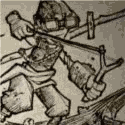


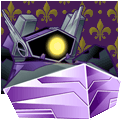





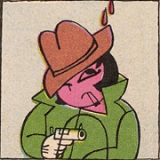


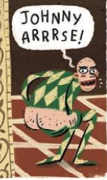

 Cat Army
Cat Army 



